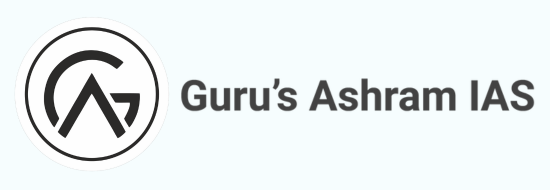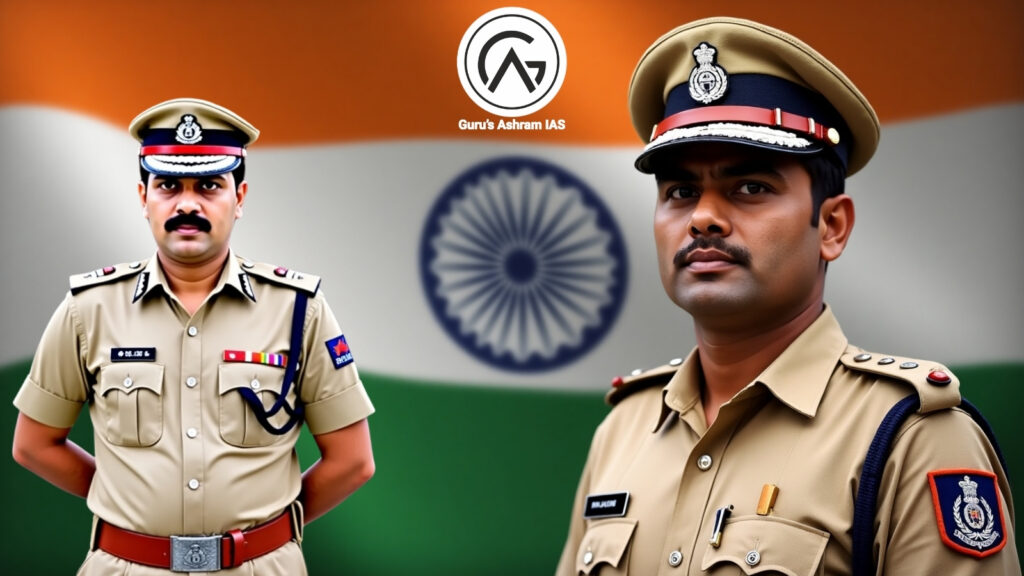Police Ranks in India: A Detailed Guide to Hierarchy, Roles, and Salaries with State-Wise Insights
As per the state subject list of the Constitution of India, police ranks are governed under Subject 1, Entry 2, established as a state responsibility through the 42nd Amendment, 1976. This framework delegates recruitment (excluding the Indian Police Service), training, organization, salary, allowances, and benefits to state governments. Each state designs its own state police systems, recruiting candidates tailored to local needs, while IPS officers, appointed centrally, lead these forces across all states. Empowered by state authority, the police force upholds law and order. The police ranks in India divide into direct entry posts and promotional posts, with direct recruitment filling lower tiers and promotions elevating officers to higher roles. Globally, Indian police ranks second in personnel strength, aggregating all state police forces.
States shape their police ranks list in India with unique nomenclature, as defined in State Police Acts and Rules and Regulations. The Indian Police Service (IPS) is the pinnacle, offering the highest direct entry police post. Beyond a certain level, IPS officers helm leadership positions. Two systems govern police force organization: the traditional system, where only the District Magistrate issues warrants, and the Commissionerate system, where the Commissioner of Police wields this power, enhancing autonomy. Typically, the Police Department falls under the state’s Home Ministry, with district police personnel reporting to the District Magistrate, who operates under the Chief Minister via the General Administrative Department. In Union Territories (UTs), the Union Government oversees police ranks through Lieutenant Governors.
-
Daily Quiz Telegram Channel: Click to Join
-
Guru’s Ashram IAS Telegram Group: Click to Join
-
Click To Join Guru’s Ashram IAS Official Whatsapp Channel :- (https://whatsapp.com/channel/0029Va68jla0AgW6JrNUzb44)
-
Click To Join Our Telegram Group Click Here:- ( https://t.me/gurusaashram )
-
Click To Join Our Whatsapp Group Click Here:- ( https://chat.whatsapp.com/J4HYp7p6jFa0wOpA644Sur )
Click Here To Call us now!
Enquiry Here, Fill this form & Ask the Questions
Recruitment Levels in Indian Police Ranks
Recruitment into police ranks India occurs at four distinct levels:
- Constabulary
- Upper Sub-ordinate
- State Police Service (SPS) via State Public Service Commission
- Indian Police Service (IPS) via Union Public Service Commission
The hierarchy of police ranks in India maintains a consistent structure, with slight variations across states.
Police Ranks in India: The Hierarchy
Here’s how police ranks in order form the backbone of police machinery nationwide:
Police Rank: Constable
The Constable is the entry point in the police ranks list in India. Called Sipahi in some regions—a term rooted in Mughal military tradition—Constables carry a wooden stick in peaceful areas or a rifle in high-risk zones after arms training. Emerging from the British-era Constabulary system, they progress to Senior Constable and then Head Constable.
- Hierarchy: Constable (CT) → Head Constable (HC) (some states insert Naik between).
Police Rank: Assistant Sub-Inspector (ASI)
The Assistant Sub-Inspector (ASI) follows, recruited through state-specific competitive exams managed by state police recruitment bodies. These exams also appoint Sub-Inspectors (SI), who advance to Inspector (PI) via promotions.
- Hierarchy: ASI → SI → PI.
Police Rank: Provincial/State Police Service (SPS/PPS)
SPS officers, selected by the State Public Service Commission, enter as gazetted officers at the Deputy Superintendent of Police (DSP) level. With experience, they may join the IPS, while some Inspectors reach DSP late in their careers.
- Hierarchy: DSP → Additional Superintendent of Police (ASP) → Superintendent of Police (SP) → Senior Superintendent of Police (SSP).
IPS Officers Ranks
IPS officers, recruited via the UPSC Civil Services Exam, start as Assistant Superintendent of Police (ASP) with pan-India postings. Above SP, all roles are IPS-exclusive.
- Hierarchy: ASP → Additional SP → SP → SSP → Deputy Inspector General of Police (DIG) → Inspector-General of Police (IGP) → Additional Director General of Police (ADGP) → Director General of Police (DGP).
Highest Police Ranks
The Director General of Police (DGP) is the highest police rank in each state, an IPS officer reporting to the Chief Secretary or directly to the Chief Minister, marking the apex of state police ranks.
Indian Police Service (IPS)
The IPS, or Indian Police Service, is one of three All India Services (AIS). Recruited by UPSC, IPS officers serve under state governments, dominating the top echelons of the police force.
IPS Officer’s Per Month Salary, Perks & Allowances, Grade Pay in 2025
Police Ranks List in Order
Here’s the complete police ranks in order with recruitment methods:
- Constable – Direct via Police Recruitment Board
- Head Constable – Promotion
- Assistant Sub-Inspector (ASI) – Direct via Police Recruitment Board
- Sub-Inspector (SI) – Promotion
- Inspector – Promotion
- Deputy Superintendent of Police (DSP) – SPS via SPSC or early IPS
- Additional Superintendent of Police (ASP) – IPS or SPS promotion
- Superintendent of Police (SP) – IPS or SPS promotion
- Senior Superintendent of Police (SSP) – IPS promotion
- Deputy Inspector General of Police (DIG) – IPS promotion
- Inspector-General of Police (IGP) – IPS promotion
- Additional Director General of Police (ADGP) – IPS promotion
- Director General of Police (DGP) – IPS promotion
Some states use Home Guards for emergencies.
Commissionerate System vs. IG System
In the traditional IG system, the Superintendent of Police oversees operations, but the District Magistrate controls warrants, often delaying action. The Commissionerate system empowers the Commissioner of Police (DIG rank) with warrant authority, enhancing efficiency.
- IG System: DGP → ADGP → IGP → DIG → SSP → SP → ASP → DSP → Inspector → SI → ASI → HC → Constable
- Commissionerate System: Commissioner of Police → Additional Commissioner → Deputy Commissioner (DCP) → Additional DCP → Assistant Commissioner of Police (ACP) → lower ranks.
State Police Departments
States are divided into zones (led by IGP), ranges (led by DIG), and districts (led by SSP or SP). Circles/Sub-Divisions, managed by DSPs, contain police stations headed by Station House Officers (SHOs)—typically Inspectors or SIs. The DGP leads the state, reporting to the Home Minister.
Indian Police Ranks and Salary
A Police Officer is a government employee tasked with safeguarding lives and property, upholding law and order, conducting criminal investigations, issuing tickets for violations like traffic offenses, testifying in court, and providing first aid before paramedics arrive. Salaries hinge on qualifications, experience, and rank.
The Indian police ranks salary varies by state, as no singular Indian Police Force exists. The salary structure comprises pay scale, grade pay, and allowances. Grade pay typically ranges from INR 2,400 to 12,000, escalating with rank. For Constables and Head Constables, it starts at INR 2,400, while higher ranks like DCP or IGP reach INR 12,000. The pay band, influenced by education, responsibilities, location, and other factors, further shapes earnings.
Eligibility varies: 12th-pass candidates can apply for Constable or Head Constable, while graduates clearing entrance exams target roles like ACP rank in police, SI, or DSP. The 7th Pay Commission (effective since 2016) significantly boosted salaries compared to the 6th Pay Commission. Below is a detailed breakdown:
Rank in Indian Police Force |
6th Pay Commission Pay Scale (INR) |
7th Pay Commission Entry Level (INR) |
| Director General of Police (DGP) | 80,000 (consolidated, no GP) | 2,25,000 |
| Additional DGP (ADGP) | 37,400-67,000, GP 12,000 | 2,05,400 |
| Inspector General of Police (IGP) | 37,400-67,000, GP 10,000 | 1,44,200 |
| Deputy Inspector General (DIG) | 37,400-67,000, GP 8,900 | 1,31,000 |
| Senior Superintendent of Police (SSP) | 15,600-39,100, GP 8,700 | 1,18,500 |
| Superintendent of Police (SP) | 15,600-39,100, GP 7,600 | 78,800 |
| Additional Superintendent of Police (ASP) | 15,600-39,100, GP 6,600 | 67,700 |
| Assistant Superintendent of Police (ASP) | 15,600-39,100, GP 5,400 | 56,100 |
| Deputy Superintendent of Police (DSP) | 15,600-39,100, GP 5,400 | 56,100 |
| Inspector | 9,300-34,800, GP 4,600 | 44,900 |
| Sub-Inspector (SI) | 9,300-34,800, GP 4,200 | 35,400 |
| Assistant Sub-Inspector (ASI) | 5,200-20,200, GP 2,800 | 29,200 |
| Head Constable (HC) | 5,200-20,200, GP 2,400 | 25,500 |
| Constable | 5,200-20,200, GP 2,000 | 21,700 |
IPS officers, entering at ASP or DSP, can rise to IGP or DGP with experience. Allowances—like Dearness Allowance (DA), House Rent Allowance (HRA), Travel Allowance (TA), and Risk Allowance—further enhance earnings, especially in high-cost or high-risk postings.
State-Wise Salary and Grade Pay for Constables
Salaries differ across states due to budget variations and living costs. Below is the average annual salary and grade pay for Constables:
Name of the State |
Average Annual Salary (INR) |
Grade Pay (INR) |
| Punjab Police Salary | 19,900 | 1,900 |
| Himachal Pradesh Police Salary | 20,220 | 1,900 |
| Bihar Police Salary | 21,700 | 2,600 |
| West Bengal Police Salary | 25,200 | 2,600 |
| New Delhi Police Salary | 21,700 | 2,000 |
| Uttar Pradesh Police Salary | 21,700 | 4,200 |
| Madhya Pradesh Police Salary | 19,500 | 1,900 |
| Assam Police Salary | 14,000 | 5,600 |
| Haryana Police Salary | 21,700 | 4,200 |
| Kerala Police Salary | 25,000 | 2,400 |
| Telangana Police Salary | 21,000 | 2,400 |
| Karnataka Police Salary | 23,500 | 1,900 |
| Jharkhand Police Salary | 21,700 | 1,900 |
For example, a Constable in Maharashtra averages INR 69,100 annually with higher allowances in urban areas like Mumbai, while in West Bengal, it’s INR 40,842. These variations reflect state priorities and economic conditions.
Indian Police Ranks and Insignia
State governments assign badges for identification:
- Constable: No stars
- Head Constable/ASI: One star, red/blue strips
- Sub-Inspector: 2-star police rank, red/blue strips
- Inspector: 3-star police rank
- DSP/ASP: Three stars, red/blue strips or IPS badge
- SP: Ashok Emblem, one star
- SSP: Ashok Emblem, two stars
- DIG: Ashok Emblem, three stars
- IGP: 1-star police rank, crossed swords
- ADGP/DGP: Ashok Emblem, crossed swords (3-star police rank in India)
State-Specific Police Ranks
- Maharashtra Police Ranks: Includes Commissioner of Police in urban hubs.
- Punjab Police Ranks: Emphasizes SSP for border duties.
- Delhi Police Rank List: Centrally managed, led by Commissioner.
- UP Police Rank List: Expansive, with SSP and SP for 240 million.
- Bihar Police Ranks: Tough, with SSP in cities.
- MP Police Ranks: Rural-centric, split by SP and SSP.
Officer Police Ranks
Officer police ranks (gazetted) begin at DSP/ACP rank in police, ascending to DGP.
FAQs of Police Ranks & and State-Wise Salary In India
- What’s the lowest rank?
The Constable, foundation of police ranks India. - What’s the highest rank?
The DGP, atop state police ranks. - What’s an IPS officer’s role?
Leadership, policy-making, and enforcement across state/national levels. - How do ranks differ by state?
The hierarchy police ranks in India is uniform, but titles like ACP rank in police vary. - Qualifications to join?
Constable: 10th/12th; SI: Degree; IPS: UPSC exam.





